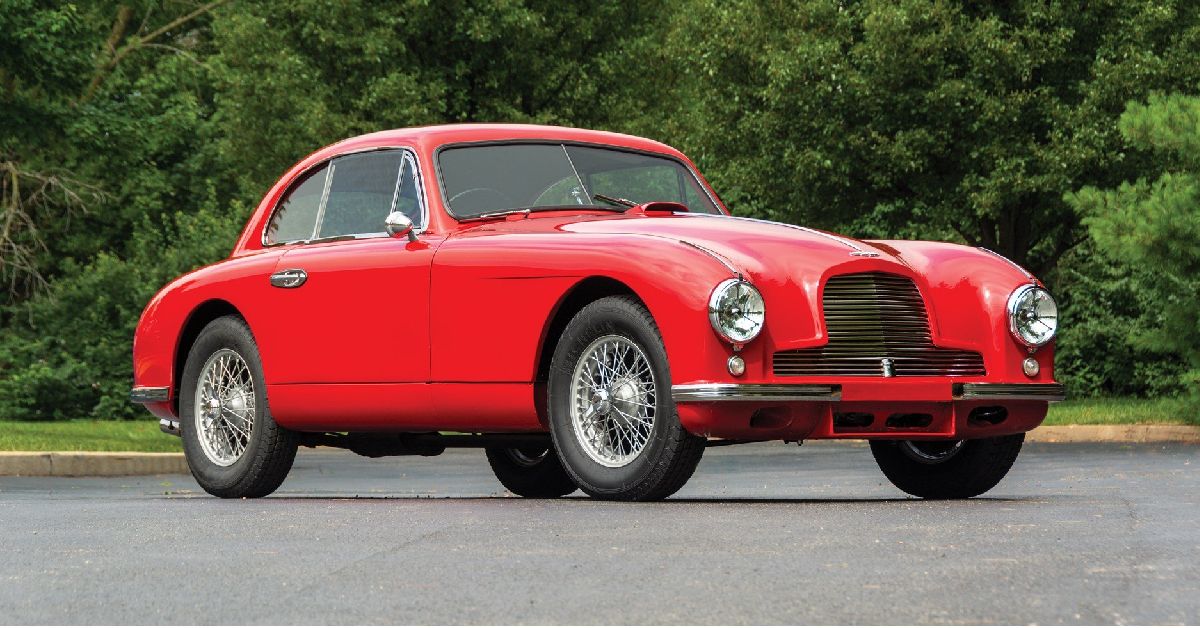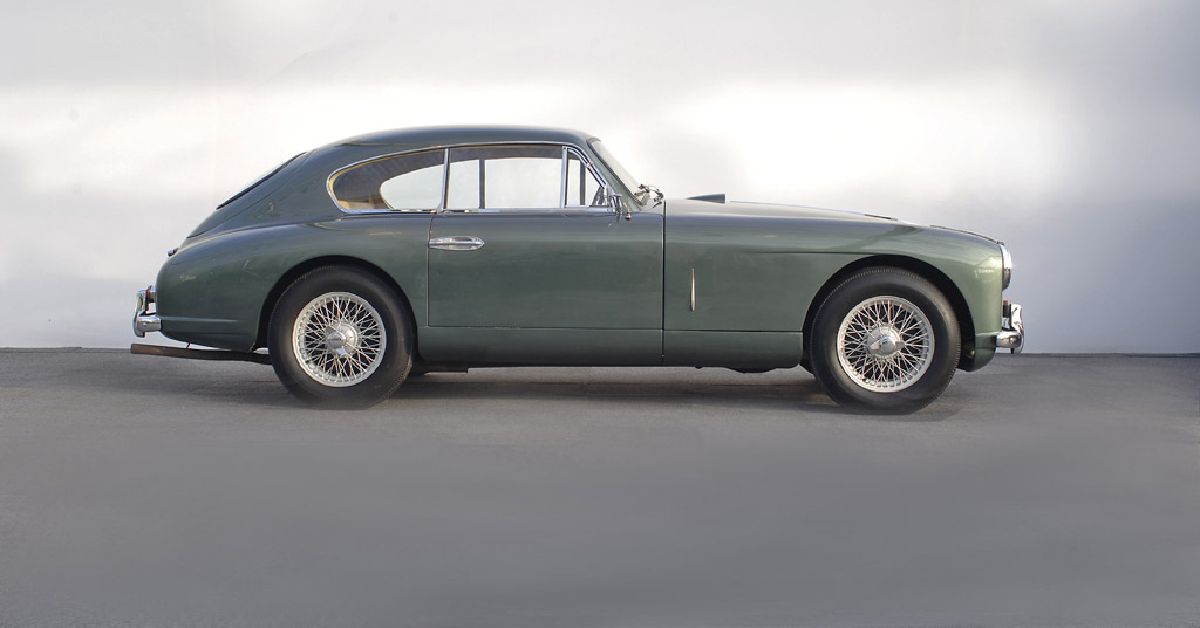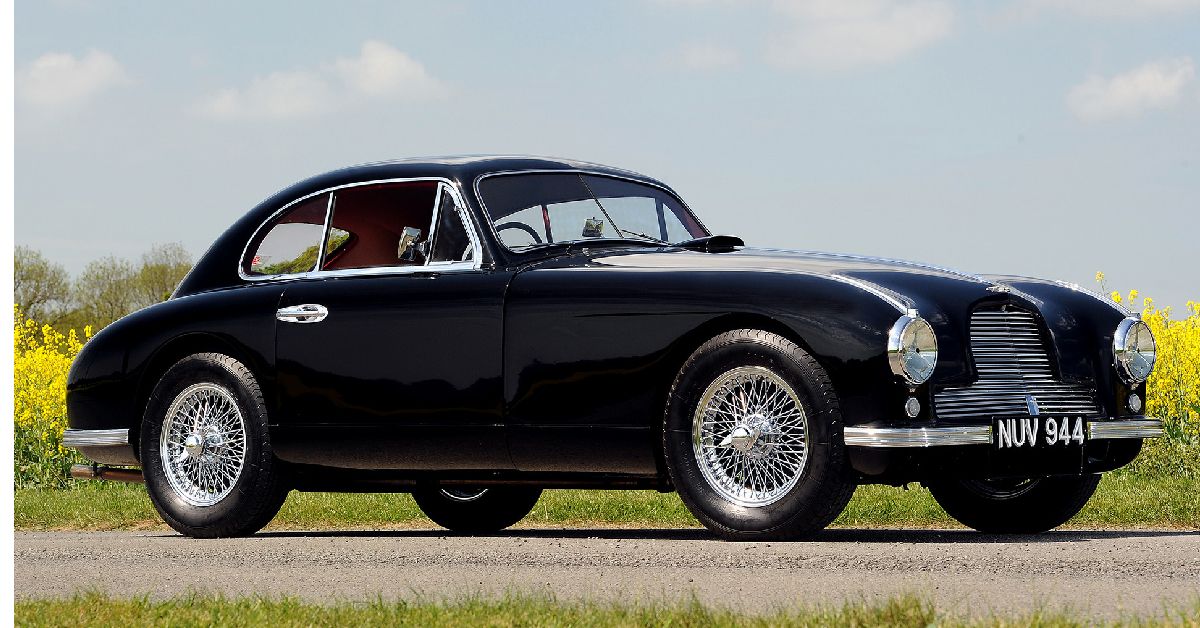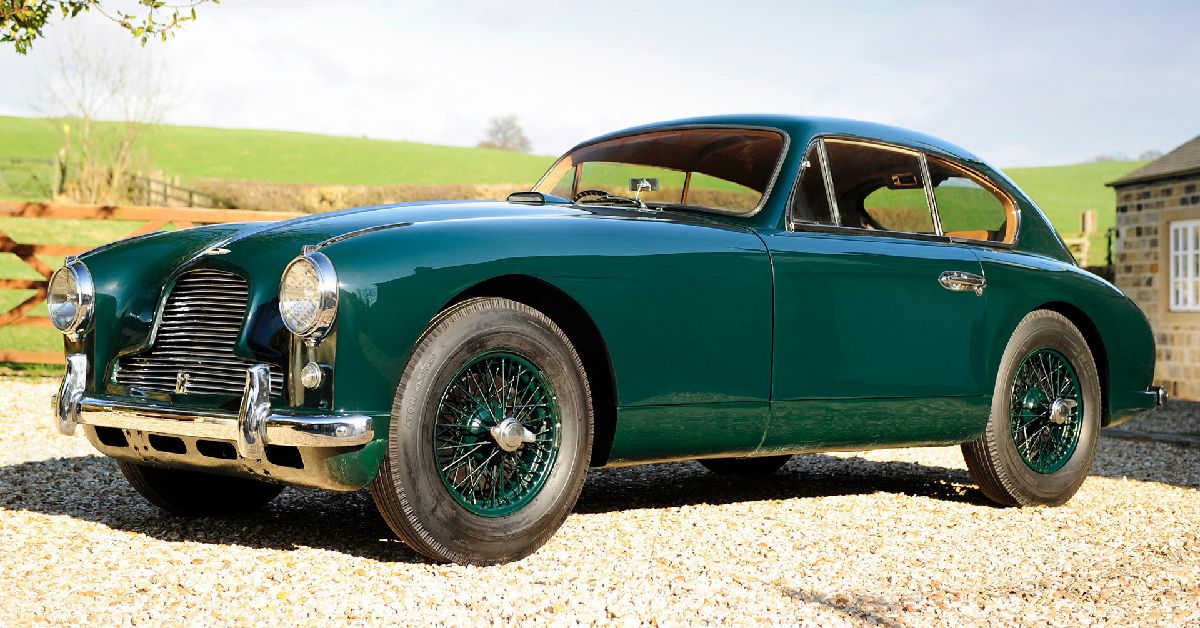With the surge in popularity of the new Aston Martin DBS Superleggera, let’s take a look at the history of the DB nameplate from Aston Martin, which started with the DB2 in 1950. The Aston Martin DB2 was a sports car from the British car manufacturer and was sold between 1950 and 1953. The DB2 was the successor to Aston Martin’s 2-liter sports car and had a relatively advanced dual overhead cam 2.6L straight-six engine in place of the earlier pushrod straight-four engine.
The Aston Martin DB2 was the most successful post-war production car featuring design cues from both Aston Martin and Lagonda since David Brown bought both companies in 1947. The DB2 was the start of Aston Martin’s DB lineup, which would become its most selling sports cars in the history of the company. The DB2 was the first successful David Brown Aston Martin and set a trend for many incredible cars to come.
The Best British Sports Car in 1950
The Aston Martin DB2 had an impressive set of features and had a tubular steel chassis and a unique two-seat tourer body designed by Frank Freeley. The Aston Martin DB2 featured Lagonda’s splendid 2.3-liter engine. The DB2 also featured the four-wheel coil-springed suspension, which was considered to be one of the major highlights of the car at that time. Some early models of the DB2 were actually prepared for the track and Aston Martin even entered three interim models for the first post-war 24 hour LeMans Race of 1949 but due to a fatal crash and the resultant death of works driver Pierre Marechal, the car never made it onto the tracks.
The first Aston Martin DB2 was launched at the New York Motor Show soon after the LeMans race. Aston Martin portrayed the DB2 as a car with the performance of a LeMans car with the comforts of a highway tourer. The only British car nearly as good was the Jaguar XK120 but the DB2 stole the show and 100 cars were ordered during the launch itself. The production versions of the DB2 were almost identical to the racing versions with the Lagonda 2.6-liter engine, stressed aluminum frame, improved DB1 frame and the same overall design.
A Commercial Success In Post-War Times
The Aston Martin DB2 was a favorite ever since its launch in the New York Motor Show. Aston Martin actually sold as many cars as it could produce during a three-year production run for the DB2. Aston Martin produced as much as 339 coupes and 102 drop heads and the DB2 was later offered with a better Vantage version and a DB2/4 version which was a longer and more spacious car with a boot and two rear seats.
The DB2 was the first Aston Martin car with a Vantage version that had an engine with larger carburetors, inlet camshaft identical to the exhaust which would increase duration and higher compression ratio pistons at 8.16:1. The Vantage option was offered with 125HP but could not be available in British markets due to the post-war austerity measures that restricted UK vehicles to 72 octane “Pool Petrol”.
Successors To The Aston Martin DB2
The DB2/4 was the third car to feature the David Brown naming and powered by the VB6J 2.9-liter engine producing 140HP and capable of up to 120 miles per hour. The DB2/4 also saw heavy success after its launch as 565 Mark I models were produced, of which 102 were Drophead coupes. There were also some Bertone bodied spiders which were produced on special demand for private buyers.
The DB2/4 Mark I was succeeded by the Mark II version, which offered an optional high compression 165HP engine and had many design changes. Mark II also introduced a new 2-seat Fixed head coupé, and 34 of the 199 Mark II vehicles were featured this coupe design. Three Mark II were sent to the Carrozzeria Touring to be bodied as spiders. Touring will also help in designing the Superleggera design of the DB4.
The Aston Martin DB4 was a grand tourer that succeeded the DB2/4 and was produced from 1958 to 1963. The DB4 set the base for further expansion of Aston Martin and inspire future cars like the DB4 GT Zagato, and the Lagonda Rapide 4-door saloon car. The DB4 featured a 3.7-liter straight-six engine that had some heating issues, but the 240HP produced by the twin-SU carburetor version made most buyers forgive this flaw. The DB4 lineup featured some classic cars and gave real choices to the buyers with the DB4 convertible, the DB4 GT, the DB4 Vantage and the Vantage GT.
The Aston Martin DB2 was the start of something even David Brown did not expect at the time. It was the first step in the post-war success story of the British car manufacturer. Taking over a failing company for $20,000 which comes to $790,000 in present times, David Brown revolutionized the British car market forever with his vision for Aston Martin and all of it started from the DB2.




